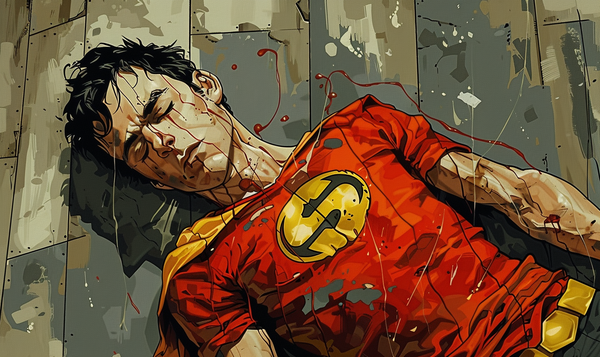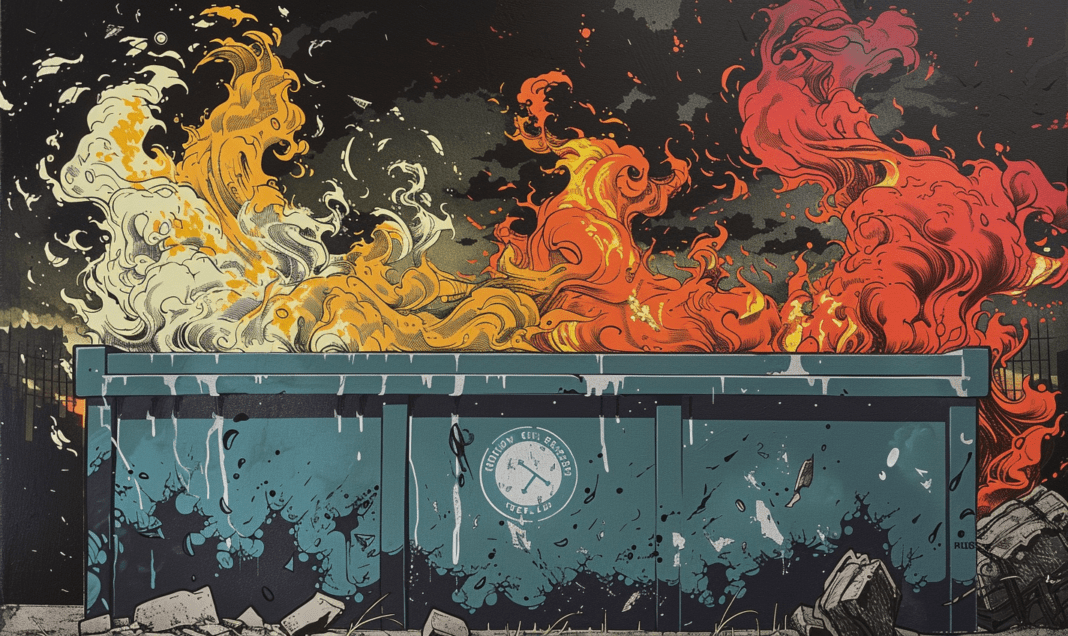Imagine this: you’re the head honcho at a global brand—Disney, Meta, Ikea, Mercedes Benz, Microsoft, Nestlé—and you find your ads cozying up to the digital equivalent of a dumpster fire. We’re talking racial slurs, pornographic imagery, and other unsavory content that’s enough to make your grandmother faint. Welcome to the wild west of digital advertising where brand safety is a joke, and everyone’s in on it but you.
The Dirty Laundry
Enter Adalytics with a bombshell report that’s turning heads and churning stomachs. Krzysztof Franaszek, the founder, didn’t just dip a toe into the murky waters of media sellers—he dove in headfirst, snorkel and all. This deep dive was prompted by a frantic request from a major brand’s global media head who had been given ironclad assurances—100% assurance from their DSP and verification vendors—that everything was kosher. The top brass had been promised a clean, shiny digital environment for their precious ads. But as it turns out, they were sold snake oil. Instead of pristine waters, they found themselves wading through a digital cesspool.
What Adalytics found was jaw-dropping. Ads for some of the biggest brands on the planet were appearing on all sorts of websites, including user-generated Wiki Fandom pages. These pages, where fans can create and share content about their favorite games and shows, had become an unexpected breeding ground for some truly eyebrow-raising content. Imagine your family-friendly Disney ad sandwiched between posts titled ‘Big Black D-ldo’ and ‘Z-ophilia’. It’s not exactly the kind of brand association you’d put on a corporate slideshow.
And it doesn’t stop there. Your IKEA ad, promising sleek and affordable home furnishings, shows up next to ‘Super Mario 3 M-sturbation’. I don’t even know what that is.
If you’re starting to cringe, you’re in good company. This isn’t just a minor hiccup; it’s a full-blown disaster. The implications for these brands are severe—these ads, meant to project an image of trust and reliability, are instead being seen alongside some of the most unsavory content imaginable. This isn’t just about misplaced ads; it’s about a total breakdown in the systems designed to protect brand integrity.
The most galling part? This wasn’t supposed to happen. The brands had shelled out big bucks for top-tier verification services. They were assured that their ads would be placed in safe, appropriate environments. Instead, they got a front-row seat to a digital freak show. Franaszek’s report pulled back the curtain on a massive failure in the ad tech industry, exposing a gaping chasm between what was promised and what was delivered. It’s a harsh wake-up call for anyone who thought they could set and forget their brand safety measures.

The “Guardians” of Brand Safety
So, who are the supposed sentinels guarding the pristine image of these brands? Enter Double Verify and Integral Ad Science (IAS), the self-proclaimed brand safety knights tasked with holding the line against the tide of inappropriate content. These companies have built their reputations on the promise of shielding brands from the digital muck and mire, ensuring that ads only appear in clean, respectable environments.
But according to Adalytics’ report, these knights have been caught with their armor down and their swords dull. The report is littered with examples of their code embedded in scandalous ad placements, proving that the fortress they promised to build is riddled with gaping holes.
When Adalytics dropped their bombshell, Double Verify predictably threw a hissy fit. Who wouldn’t? They dismissed the report, branding it as another instance of third-party research lacking the brains to grasp the complexities of media verification.
Their response was swift and sharp, claiming that Adalytics didn’t understand the intricate dance of digital ad placement. Double Verify’s official statement was a masterclass in corporate deflection: the screenshots Adalytics highlighted were supposedly linked to their publisher service, not their advertiser service.
It’s a bit like a chef claiming the rat in the kitchen isn’t their problem because it’s in the pantry, not the dining room.
Oh, that clears it up, right?
Wrong.
IAS, not to be outdone in the damage control department, joined the chorus of indignation. They echoed Double Verify’s sentiments, asserting that the report failed to understand the “nuances” of their operations. But here’s the kicker: while these companies were busy playing the blame game, the real issue—the fact that high-profile ads were showing up next to content that would make a sailor blush—remained glaringly unaddressed.
It’s like arguing over who left the front door open while the house is being robbed. The focus should be on fixing the problem, not pointing fingers.
Industry Insiders Spill the Beans
The report doesn’t just sling mud; it amplifies the voices from the industry trenches. Fortune 500 brand marketers are practically pulling their hair out, screaming for transparency. They want DSPs and verification tech to start earning their keep—yesterday. One anonymous marketer nailed it: “Is verification tech implemented correctly but not working? If so, huge problem. Does not seem to be doing any page-level scanning.”
Let’s break that down into layman’s terms. Advertisers want their ads in safe, suitable, viewable environments, reaching actual human beings, not lurking in the cesspools of the internet. Right now, achieving that is about as likely as finding a needle in a haystack on a windy day.
This isn’t an isolated incident. A previous Adalytics report highlighted Google’s dirty laundry, showing ads rubbing elbows with pornographic, zoophilic, and pirated content. This isn’t just a glitch in the matrix—it’s a systemic failure of epic proportions.
According to The Drum, these problematic ads mostly appeared on Fandom.com, a wiki-style platform where users create content. But don’t get too comfortable; the muck spreads wider. Ads for big brands showed up next to sketchy content across more than 25 other domains, although these weren’t all detailed in the report.
The Fallout
Industry experts are chiming in, and let me tell you, they’re not holding back. Alexandre Nderagakura, who’s seen it all in the ad world, isn’t sugarcoating the mess we’re in. He bluntly states that without a deep understanding of programmatic advertising and some good old-fashioned diligent report-checking, ads are bound to end up in the digital gutter. That’s right—forget about set-and-forget strategies. If you’re not actively eyeballing where your ads are landing, you might as well be throwing them into a black hole.
Then there’s Michael Bishop, the sharp CTO and Co-Founder of OpenAds.ai. Bishop isn’t here to soothe your worries with false reassurances. He cuts to the chase, emphasizing that the real issue isn’t about preventing every single risqué ad placement—because let’s face it, that’s like trying to keep water out of a leaky boat with duct tape. Instead, the focus should be on transparency. Ad buyers need to be fully clued in on where their precious ads are ending up at the end of the programmatic pipeline. It’s about having real-time, no-BS reports that show exactly where those dollars are going.
Bishop’s call for transparency isn’t just a polite suggestion—it’s a wake-up slap to the face. The programmatic advertising world is currently a black box where ads go in one end and pop out who knows where. Brands need a flashlight to see what’s happening inside that box. By shedding some light on this murky process, brands can take control and ensure their ads don’t get cozy with questionable content. This isn’t just about dodging a PR disaster; it’s about keeping your brand’s reputation squeaky clean in a world where one misstep can go viral in minutes.
So here’s the kicker: Nderagakura and Bishop are spelling it out for an industry that desperately needs to get its act together. The current brand safety protocols? They’re like putting a Band-Aid on a bullet wound. Brands can’t just rely on automated systems and trust the third-party vendors’ word as gospel. It’s time to roll up the sleeves, get into the nitty-gritty of ad placements, and demand real transparency. Only by taking a proactive stance can brands hope to navigate this digital minefield without stepping on a landmine. It’s time to shift gears, embrace vigilance, and make transparency the new mantra in the wild west of digital advertising.
The Bottom Line
Let’s not sugarcoat this—brand safety, as it stands, is more myth than reality. The current measures are failing spectacularly, leaving major brands exposed and tarnished by association with harmful content. It’s high time for the digital advertising industry to wake up and smell the coffee. Transparency, better tech, and rigorous page-level scanning aren’t just buzzwords—they’re essential survival tools.
So, what’s the takeaway here? If you’re trusting the current brand safety measures to keep your ads out of the digital gutter, you might want to rethink your strategy. Because right now, it’s not a question of if your brand will end up next to unsavory content—it’s when.
In the broader scheme of things, the Adalytics report is more than just a wake-up call. It’s a clarion call for the entire industry to clean up its act. Public shaming, while controversial, seems to be the only thing lighting a fire under the feet of these companies. It’s time for a collective effort to address these shortcomings and protect the integrity of brands in the digital realm.
And while we’re at it, let’s give a nod to the absurdity of it all. We’ve got sophisticated algorithms and AI, yet we’re still playing whack-a-mole with harmful content. The digital landscape might be a jungle, but it’s high time we stopped letting the foxes guard the henhouse.
So, if you’re an advertiser, it’s time to get your hands dirty and dig deep into your digital ad placements. Don’t take the word of your brand safety vendors at face value. As the saying goes, trust but verify—because in this game, the stakes are too high to leave anything to chance.




